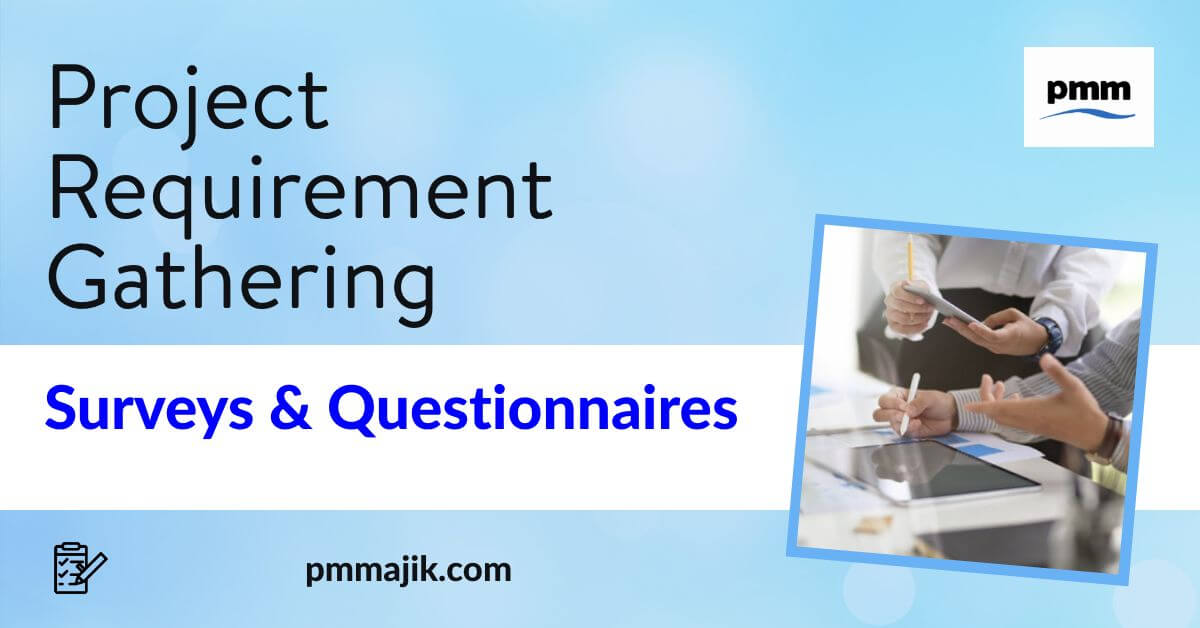To get a project right, you need to understand what all of the stakeholders want and need. In past articles we’ve given an overview of different techniques you can use, and here we’re going to explore surveys and questionnaires.
As with all the techniques for gathering project requirements, there are pros and cons to the process. The article will go through:
- The reasons for using a survey or questionnaire
- How you can present a survey to stakeholders
- Why you should be using the method
- Pitfalls to watch out for in the process
to help you can decide whether this method is going to be effective within your particular parameters.
When is it right to use a survey?
Having a wide range of stakeholders in your project presents challenges to understanding their requirements. It’s great to have a lot of input, but you need to keep an eye on costs during the initial stages of your project.
Using a survey or questionnaire to gather information for your project’s requirements is cost-effective and removes constraints such as a geographically dispersed stakeholder base or time issues.
You also get a guarantee of accurate recording of responses. Whether online or on paper, a survey or questionnaire leaves no room for interpretation of tone or points that can get lost in translation.
How can I conduct a survey?
The primary choice to make when considering using a survey or questionnaire is whether to use a hard or soft copy to gather information.
An online, soft copy has clear cost benefits since there are no printing required or need for data input later. However, a hard copy could increase accessibility if not all stakeholders have reliable computer and internet access.
Once you’ve decided the practicalities of presenting your survey, there are considerations about the type of questions that you’ll want to ask.
Some examples of survey questions include:
- Likert scales which allow respondents to make a linear choice, for example, “strongly agree, agree, neutral, disagree, strongly disagree”. It’ll help you understand attitudes but can give skewed positive answers
- Rating and rankings let your respondents choose an answer on a scale of 0-5 or 0-10 which are easy to understand and analyse but the information only bares relation to your defined list rather than being independent data
- Checkboxes and drop boxes offer a set list of predetermined answers, giving you control of the data for more open questions, yet limits the creativity of the responses you could get
- Text boxes give your respondents full control over what they tell you, giving you accurate answers but these can be time consuming to analyse and categorise
What are the benefits of conducting a survey?
Surveys, on the whole, give you discrete sets of data. This makes the information gathered easy to analyse and present in the form of graphs, charts, and infographics.
You’ll have datasets that leave little room for interpretation; there’s no body language to interpret during a conversation for example.
Another good thing about using a survey is that you can bring in everyone involved in the project rather than having to establish representative samples. This can increase engagement of stakeholders since they feel more valued.
Are there any drawbacks to using surveys?
By their very nature, surveys have restricted inputs and this can stifle creativity. It can be tough to get deep insight when you only offer a limited range of answers.
The responses you pick for your survey can also have bias in them. Choosing positive or negative framing of questions can have big differences in outcomes of a survey.
Summing up
When you have a lot of stakeholders, a survey is a valuable tool in gathering information for your project requirements. Be careful to understand the different types of questions available and choose your words carefully – you don’t want to inadvertently skew the data.






